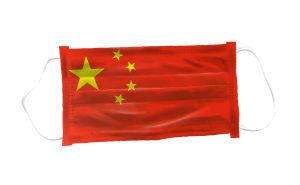Officials in Shanghai promised Friday to ease anti-virus controls on truck drivers that are hampering food supplies and trade, while Hong Kong’s government announced the end of a 2-year-old ban on non-residents flying into the city as its outbreak fades.
Streets in Shanghai were largely empty despite an easing of restrictions that confined most of its 25 million people to their homes. Many residents still were barred from leaving their neighborhoods.
A deputy mayor, Zhang Wei, promised “every effort” to resolve problems that prompted complaints about lack of food and fears the shutdown of China’s most populous city might disrupt global trade.
Meanwhile, the Hong Kong government said non-residents who are vaccinated and have a negative virus test will be allowed to fly in again starting May 1. That eases one of the world’s most stringent travel bans, imposed in March 2020.
An outbreak that infected some 1.2 million people in the city of 7.4 million and killed almost 9,000 appeared to be fading. Hong Kong Disneyland and museums reopened this week and restaurants resumed evening dining as new daily case numbers fell.
On the mainland, Shanghai leaders are scrambling to ease the impact of a “zero-COVID” strategy that shut down most businesses starting March 28.
Most factories and offices remained closed despite changes in anti-virus curbs since last week that have allowed 12.3 million people out of their homes.
In one neighborhood, a woman rode a skateboard and a couple took a child’s photo outside a park. Delivery drivers rode past on scooters while government employees in white suits sprayed disinfectant on trash bags.
“You can only walk the dog,” said resident Isabella Kao, who cannot leave her apartment compound because nearby areas are quarantined. “There’s no point in going out because all your stores are closed, right?”
On Friday, the government reported 11 coronavirus deaths and 17,529 new cases in Shanghai. All but 1,931 had no symptoms. Shanghai accounted for 95 percent of the 18,598 new cases on China’s mainland, of which 2,133 had symptoms.
China’s infection numbers in its biggest outbreak since the start of the pandemic in 2020 are low compared with other major countries. But the ruling Communist Party has suspended access to Shanghai and some other major cities to isolate every case, fueling public frustration and warnings about the rising cost.
Truck drivers who bring food to Shanghai and goods to its port, the world’s busiest, are hampered by multiple checkpoints and virus tests. That has led to long waits and reports that some shipping companies and drivers are avoiding Shanghai.
Under the new system, drivers are allowed through if they have had a negative virus test within the past 48 hours, no fever, and a “green health code” on their smartphone that shows they haven’t been to areas with outbreaks, according to Wu Chungeng, director of the Highway Bureau of the Ministry of Transportation.
“All localities should directly release them,” Wu said, according to news reports.
Meanwhile, some 80,000 small enterprises in government-owned buildings in Shanghai will be given six months’ free rent, the director of the city’s commission for state-owned assets, Bai Tinghui, said at the news conference with Zhang, according to state media.
The government has made 65 billion yuan ($10 billion) in “support loans” to Shanghai businesses and distributed other financial aid, the online news outlet The Paper reported, citing city officials.
Officials said the Shanghai port is operating normally, according to news reports. But they cited daily cargo volume equivalent to 100,000 containers, down almost 30 percent from the normal level of 140,000 containers.
Authorities are enforcing a three-tier system that allows residents out of their homes if their area has had no new infections in the past week. They can leave the neighborhood after two weeks without a case. Supermarkets and pharmacies are reopening.
Some residents say they came close to being allowed out before a new case was found in a neighboring building and the wait started from scratch.
Kao, 38, who runs a trading company, said she and her partner have spent most of the six weeks since March 11 in their apartment. She said they were allowed to go to other parts of the city for only four days during that time.
Kao said her building is a “control area,” which means they are allowed outside, but around it is a “closed area” whose residents are confined to their homes.
“I feel the people of Shanghai are puzzled by the current anti-epidemic policy,” Kao said.

































